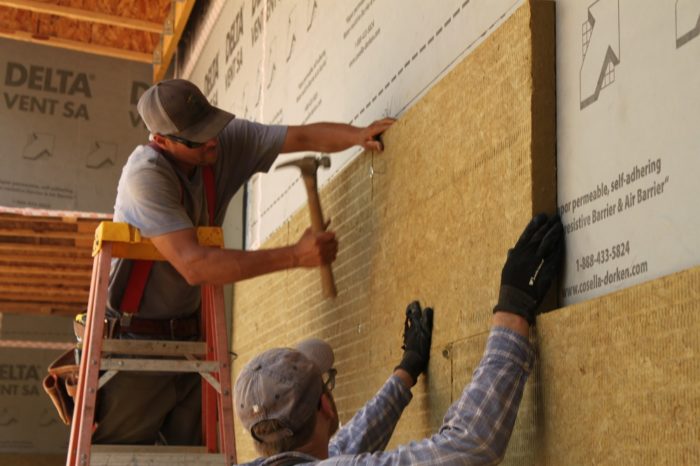IKING GROUP-INSULATION AND ACOUSTIC SOLUTION FOCUS
Virtually every aspect of today’s residential building involves the application of sophisticated building science to achieve better performing homes that are durable, energy-efficient, cost-effective and code compliant. This current era of building science-driven innovation can also usher in some uncertainty as to which product and material selections will help achieve high-performance homes without compromising jobsite efficiency and profitability.
A high-performance home is greater than the sum of its parts. Simply selecting category leading products will not automatically achieve the desired end product. In today’s sophisticated building environment, it remains critical for builders to avoid product interactions that can negatively impact the performance of other materials in the assembly.
To help navigate through this changing landscape, builders can consider adopting a multi-dimensional set of criteria to assess their options and enable confident product decisions. Investing the time to evaluate the best choice of materials for the job can save a lot of headaches—and callbacks—down the road.
Let’s take a look at how fiberglass insulation measures up in five key categories including performance, installation, safety, environmental impact and accountability, to illustrate why a cross-category product review can prove beneficial and profitable.
Performance
When it comes to performance, fiberglass represents one of the most cost-effective ways to insulate homes, protect against heat loss and provide superior moisture resistance.
In fact, extensive research from the Building Science Corporation has shown that once a building is sealed, R-value is what matters most for thermal performance—not insulation type. A comprehensive air infiltration study, conducted by the Owens Corning Building Science team, also found that the majority of air leakage occurs at joints, not in framing cavities where most insulation is installed.
Builders who strive to build better can trust the research that has consistently shown fiberglass insulation to provide excellent thermal performance and moisture control.
Installation
The key to success in any insulation installation is doing it right the first time. As a result, installation represents another important category to evaluate when making product decisions.
Fiberglass insulation is easy to measure, cut and install and the jobsite can stay open to all trades during and following installation. While various insulation choices exist, fiberglass batts remain an effective, economical and efficient option for consistently achieving Grade 1 installations.

Safety
The ease of installation with fiberglass insulation also directly correlates to creating a jobsite that can protect installers from unnecessary hazards and safety risks on the job.
Lingering misperceptions related to fiberglass wool have been categorically debunked, including the finding by the International Agency for Research on Cancer, the National Toxicology Program and California Prop 65 that do not consider fiberglass wool to be a cause of cancer
in humans.
Working with fiberglass offers builders the ability to eliminate risks with a proven solution that performs.
Environmental Impact
Building science innovation has also driven advancements that make fiberglass insulation a sustainable solution.
In addition to recycled content, builders can also look to life cycle assessment as the recognized industry standard for determining the relative sustainability benefits of product choices.
As builders continue to factor environmental impact into their jobs, fiberglass insulation can deliver long-term sustainable and responsible solutions.
Accountability
To help minimize potential for field failures, manufacturers like Owens Corning control the quality and performance of products from design through manufacturing, and maintain a close relationship with builders, contractors and consumers.
As a result, widely-studied fiberglass insulation continues to represent a safe building material that incorporates leading building science innovation and delivers a highly adaptable solution that contributes to the overall comfort, energy efficiency and performance of the home.
Remaining informed about how key building products, like insulation, perform across each of these categories will enable better building today and into the future.